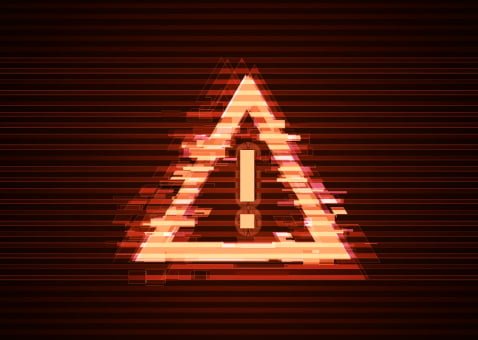Consider the herculean challenge faced by those responsible for national security. No government can possibly protect its citizens against every single potential attack scenario, so the government gathers information that allows it to assess which threats are most probable – which represent the greatest risks to the country – and on that basis, it determines where to put its money and its efforts.
A similarly troublesome situation is faced by anyone developing a cyber security strategy for a business. The quandary is that it’s simply not possible to defend a business against every potential threat. There isn’t enough time, money, or human resources. How does one know where to invest?
And that’s where cyber threat intelligence (CTI) comes in.
What is Cyber Threat Intelligence?
CTI is a crucial component of any cyber security strategy because it allows you to determine which threats represent the greatest risk to your business. It is essential to have this knowledge so you can identify and prioritize the most likely causes of trouble, and dedicate your available resources where they will be optimally effective.
CTI first requires collection of cyber threat intelligence – but it doesn’t stop there. It involves rigorous evaluation and analysis of this information, while considering factors such as source and reliability of information, to allow for the rapid detection of deceptions and threat actors in a way that is accurate, relevant, and most importantly – actionable.
Why Do We Need CTI?
With a good Cyber Threat Intelligence, organizations have a means of identifying and filtering massive quantities of data and evaluating which threats could most negatively impact the organization. Analysis is the key: it’s what transforms the information into intelligence.
To form high quality threat intelligence, cyber threat intelligence analysts need to develop and apply defined analytical techniques to create an accurate and balanced context into which new cyber threat information can be integrated.
CTI provides a holistic approach to cyber security risk assessment by relating not only to “tactics, techniques and procedures” (TTPs) but also looking beyond these to the overall picture, including identifying trends and patterns that indicate emerging threats.
Key Requirements for Cyber Threat Intelligence
For CTI to help your business, it must be relevant; it needs to relate to your organization’s specific environment and customized to suit its needs. How is this accomplished?
To be effective, CTI must draw its information from a broad range of sources and the information must be prioritized, highlighting what is most relevant to your organization. Pertinent factors include your business operations, technology infrastructure, supply chain, partners, and even competitors.
CTI is not just a question of what information is received, but of how that information is used: it needs to be quick and intuitive to access and analyze. Or, as pointed out in the Gartner Report for Security Threat Intelligence Products and Services (2017), the value of security threat intelligence products is constrained by an organization’s ability “to afford, absorb, contextualize and, especially, respond to the information provided by the services.”
This means CTI must be fully integrated with your internal security operations. Why? Because the collected intelligence is correlated with other sources of information from log monitoring, vulnerability scanning, and other CTI sources to provide actionable and contextual actions. The complex integration and correlation of cyber threat intelligence reduces security team overload and gives them the intelligence needed respond to incidents faster and more effectively, minimizing false positives.
Thus, CTI is what happens when you combine full access to data and information – with top analytical talent, and a dedicated, intuitive threat intelligence platform. Access to data includes all network data as well as to open source data, ISAC (Information Sharing and Analysis Center) information, and data from third party intelligence vendors, which is mined from different layers of the Internet and the Dark net, open sources, and dedicated forums.
How Does CTI Drive My Business Decisions?
It can be hard to connect traditional business priorities to the language of CTI. And this gap must be bridged. Ask yourself, for example, how would a security breach impact your organization’s bottom line? Do you know your risk quotient? Is your organization well positioned in terms of its cyber defense? Is your organization aware of the kind of threats it faces outside? Who is targeting your organization?
From a purely business perspective, an organization needs a clear understanding of what threats exist, and an assessment of how these threats could potentially impact the organization’s product, service, and brand. This knowledge should then be a driver in business decisions.
CTI Mitigates Threats in Near Real Time
To maximize the effectiveness of CTI, integration with existing systems is essential. The full integration of CTI into a single, unified and customized solution like CyberProof allows a business to strengthen its defenses optimally both by blocking known malicious IPs, URLs, etc., and by being more proactive and prepared for emerging threats – through behaviors such as threat hunting and searching for traces of incidents.
CyberProof’s approach of bringing all related TI activity into a single, integrated platform contributes directly to the rapid mitigation of threats. For example, if CyberProof’s team of experienced cyber security professionals identifies a new trend, the team can notify its SOC analysts through its own platform. The SOC analysts can then check within the client’s system, searching for traces of an attack.
Because it all happens within the same system, the proactive approach and rapid workflow lead to the avoidance of a breach, in near real time. In other words, quick access to contextualized cyber TI together with the effective prioritization of alerts accelerates both time to detect and time to respond, and can significantly boost your organization’s cyber resilience.
References:
- Gartner Report for Security Threat Intelligence Products and Services (2017)



